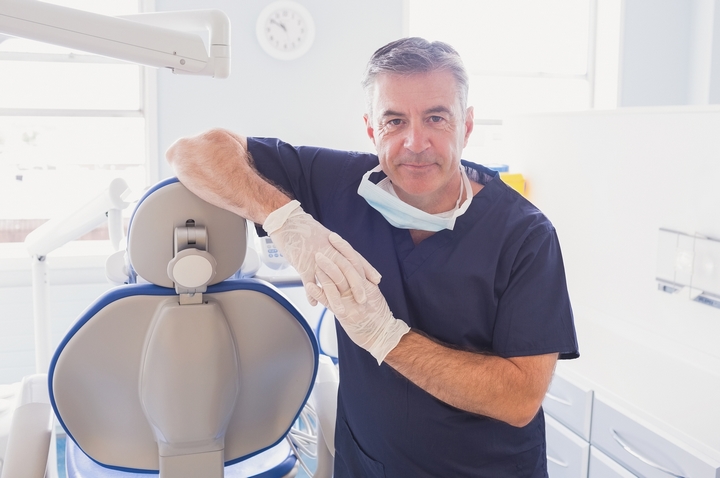8 Different Types of Dentists and Their Specialties
Seeing our dentist is an appointment we make a few times a year. We have our teeth cleaned and get a check-up to ensure we are taking good care of them, and if there is a problem, they are there to correct it.
While most of our visits are fairly routine, some dental issues require a specialist to tackle. Your family dentist may be well versed in regular oral health, but they may not work with more difficult problems. Fortunately, the profession has different specialties to handle even the most difficult cases.
Here are eight different types of dentists and their specialties:
Type #1: General Dentists

A general dentist is the one you visit for all your primary oral care. They provide cleaning and X-rays during your appointment and will diagnose and treat minor conditions like:
- Gum disease
- Tooth extraction
- Fillings
- Crowns
- Bridges
- Chip repair
- Bonding
- Dental implants
This dentist focuses on oral hygiene and teeth health, so you will probably see them twice a year unless you have cavities or other problems to fix. They will usually be your dentist for life and will treat you and your family. They also serve as the role of an emergency dentist Mississauga if you have any urgent problems. Plus, general dentists are also the ones who will refer you to other dental specialists when needed.
Type #2: Pediatric Dentists

A pediatric dentist has all the same skills as a general dentist but focuses on treating infants, children and adolescents. Specialized training gives them the tools to deal with their patients with difficult behavioural situations and physical or mental challenges.
Type #3: Orthodontists

An orthodontist is trained to work on misaligned teeth, supporting facial structures and jaw bones to gain better function and a pleasing cosmetic look. They design and install custom oral devices like mouth guards, retainers, braces, palate expanders and headgear to correct various issues. Orthodontists work to correct your smile and improve bone structure, and this process takes time, with repeated visits for adjustments and repair.
Type #4: Endodontists

An endodontist is a highly trained dentist who takes an extra few years of training beyond dental school to diagnose and treat tooth pain, particularly with the tooth pulp and periradicular tissues. The roots of our teeth are surrounded by blood vessels, nerves and tissues and, when inflamed, infected or diseased, may need a root canal.
Endodontists use advanced technology to perform root canals and surgeries to save the tooth by removing the unhealthy pulp and filling in the space before sealing it.
Type #5: Oral Surgeon & Pathologists

When surgery is required involving the mouth, face or jaw, an oral surgeon will be your dentist. They are trained to deal with traumatic injuries, tumours, and cysts, remove wisdom teeth, and place dental implants. An oral or maxillofacial surgeon focuses on the soft and hard tissues around the mouth, including:
- Hard palate
- Soft palate
- Facial tissues
- Tongue
- Gums
- Cheeks
- Lips
Their medical school training allows them to specialize in:
- Reconstructive surgeries
- Complex tooth extraction
- Cleft palate and lip
- Biopsies
- Cancerous tissue removal
- Facial infections
- Deformities
- Trauma
- Tooth loss
An oral pathologist studies different diseases in the mouth that affect the jaw, teeth, gums, cheeks and lips. They take biopsies and have them tested to determine underlying conditions or diseases.
Type #6: Periodontists

The periodontium is the soft tissue structure that supports the teeth and the mandibular and maxillary jawbones. It allows the tooth to be attached to the bone while providing a barrier from oral microflora and is composed of the periodontal ligament, cementum, gingiva and alveolar bone. A periodontist works on these structures to diagnose and treat diseases in the gums like pain and inflammation from gingivitis and periodontitis, and treatments include:
- Installing dental implants
- Cosmetic skin grafting
Type #7: Prosthodontists

A prosthodontist is used for other dental issues like missing, damaged or decaying teeth. They are trained to make crowns and caps to correct issues in the mouth and install false teeth, bridges, dentures and veneers.
Patients will gain better function and a cosmetically pleasing look and improve their ability to chew, bite and even speak better. Trauma reconstruction is the responsibility of a prosthodontist, and they work with dental labs to customize oral appliances that fit each patient.
Type #8: Cosmetic Dentists

A cosmetic dentist performs procedures to improve a patient’s smile. This helps people with self-confidence and gives them the healthy, attractive look they want. Procedures include:
- Braces
- Veneers
- Gum contouring
- Teeth whitening
This involves extra training beyond dental school. While most of these procedures are not medically necessary, they are aesthetic treatments that can improve the look and function of the teeth, allowing for easier eating, brushing and flossing.
We only have one set of teeth, and if they become damaged or cause pain, your dentist is there to fix them. Understanding the types of dentists will better lead you to the right professional to restore your function and appearance and let you live life to its fullest.

